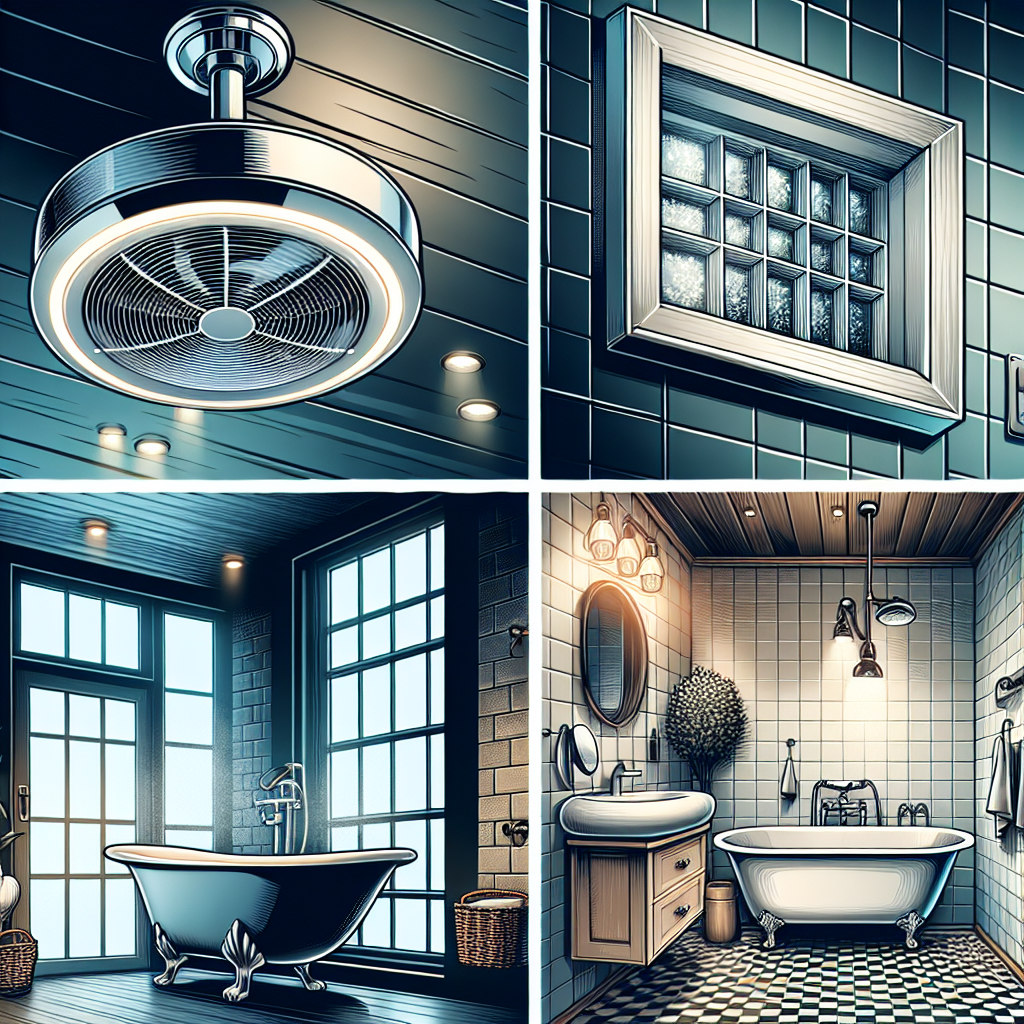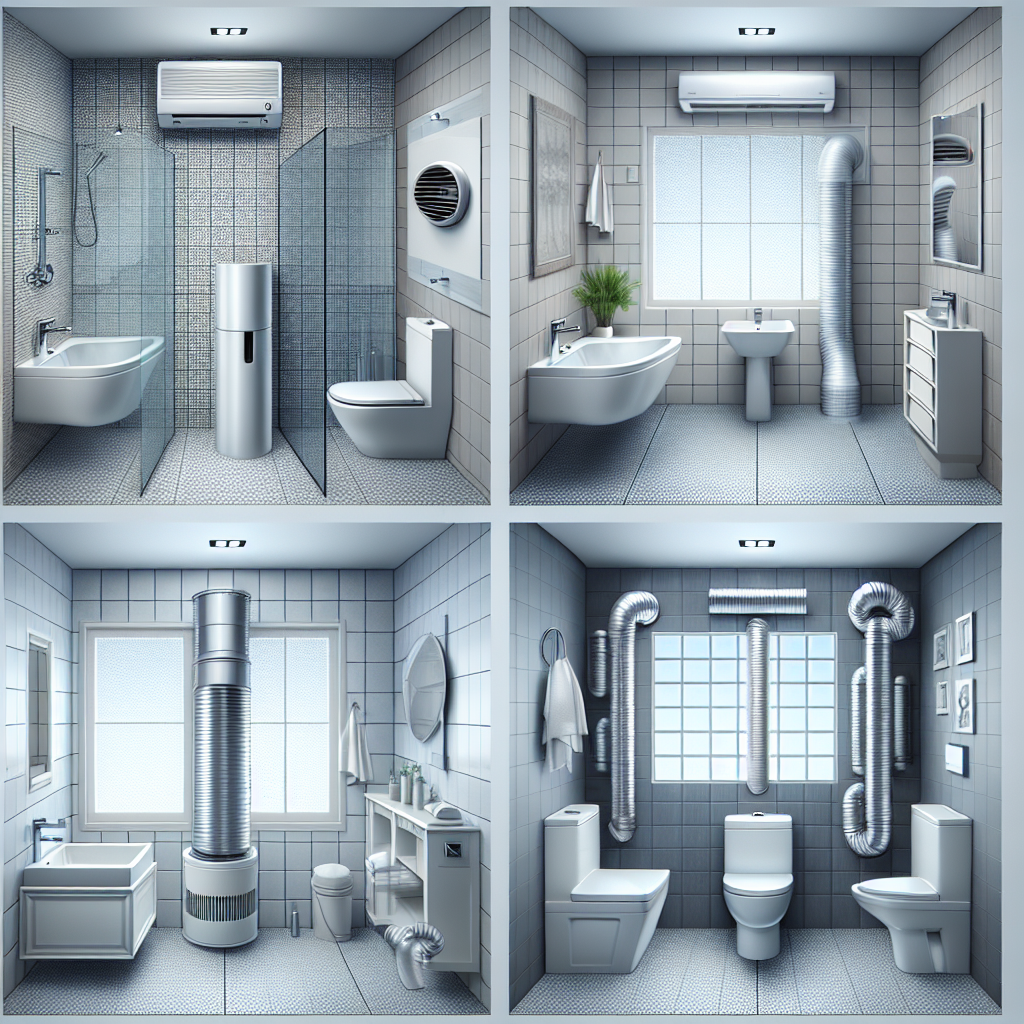Bathroom Ventilation Systems: The Key to a Healthy and Comfortable Bathroom

When it comes to designing or renovating a bathroom, many homeowners focus on the aesthetics and functionality of fixtures such as the sink, toilet, and shower. However, one crucial aspect that is often overlooked is the bathroom ventilation system. A well-designed and properly functioning ventilation system is essential for maintaining a healthy and comfortable bathroom environment. In this article, we will explore the importance of bathroom ventilation systems, the different types available, and how to choose the right one for your needs.
The Importance of Bathroom Ventilation Systems
A bathroom is a space that is constantly exposed to moisture, steam, and odors. Without proper ventilation, these elements can lead to a range of problems, including:
- Mold and Mildew: Excessive moisture in the bathroom can create an ideal breeding ground for mold and mildew. These fungi not only cause unsightly stains and odors but can also pose serious health risks, especially for individuals with respiratory conditions.
- Damage to Building Materials: Prolonged exposure to moisture can damage the walls, ceilings, and other building materials in your bathroom. This can lead to costly repairs and renovations down the line.
- Unpleasant Odors: Bathrooms are notorious for unpleasant odors. Without proper ventilation, these odors can linger and make the bathroom an unpleasant space to be in.
- Excessive Humidity: High humidity levels in the bathroom can make it uncomfortable and can also cause condensation on mirrors, windows, and other surfaces.
By installing a reliable bathroom ventilation system, you can effectively address these issues and create a healthier and more comfortable bathroom environment.
The Different Types of Bathroom Ventilation Systems
There are several types of bathroom ventilation systems available on the market. The most common ones include:
1. Exhaust Fans
Exhaust fans are the most popular type of bathroom ventilation system. They work by drawing out the moist air from the bathroom and expelling it outside. Exhaust fans are typically installed on the ceiling or wall and are connected to a duct that leads to the exterior of the building. These fans are available in various sizes and capacities, allowing you to choose one that suits the size of your bathroom.
When selecting an exhaust fan, it is important to consider the noise level, airflow capacity, and energy efficiency. Look for fans with a low sone rating (indicating quieter operation) and a high cubic feet per minute (CFM) rating (indicating better airflow).
2. Ventilation Fans with Heat and Light
Ventilation fans with heat and light combine the functions of an exhaust fan, a heater, and a light fixture. These fans are ideal for bathrooms in colder climates or for those who prefer a warm bathroom environment. The heat function helps to keep the bathroom cozy, while the light fixture provides additional illumination.
When choosing a ventilation fan with heat and light, consider the wattage of the heater, the brightness of the light, and the energy efficiency of the fan. Look for models that have adjustable heat settings and energy-saving features.
3. Ventilation Fans with Humidity Sensors
Ventilation fans with humidity sensors are designed to automatically detect and remove excess moisture from the bathroom. These fans are equipped with sensors that monitor the humidity levels and activate the fan when the levels rise above a certain threshold. This ensures that the fan operates only when necessary, saving energy and reducing noise.
When selecting a ventilation fan with humidity sensors, consider the sensitivity of the sensors, the noise level, and the energy efficiency. Look for fans with adjustable sensitivity settings and a low sone rating.
Choosing the Right Bathroom Ventilation System
When choosing a bathroom ventilation system, there are several factors to consider:
1. Bathroom Size
The size of your bathroom will determine the airflow capacity required for the ventilation system. Larger bathrooms will require fans with higher CFM ratings to effectively remove moisture and odors.
2. Noise Level
If noise is a concern, look for ventilation systems with a low sone rating. Fans with a sone rating of 1.5 or lower are considered quiet and are suitable for bedrooms and other noise-sensitive areas.
3. Energy Efficiency
Choose a ventilation system that is energy-efficient to minimize electricity consumption. Look for fans with the ENERGY STAR label, as they meet strict energy efficiency guidelines set by the U.S. Environmental Protection Agency.
4. Additional Features
Consider any additional features that may be important to you, such as built-in heaters, lights, or humidity sensors. These features can enhance the functionality and convenience of your bathroom ventilation system.
Frequently Asked Questions about Bathroom Ventilation Systems
1. How often should I run my bathroom ventilation system?
It is recommended to run your bathroom ventilation system during and after every shower or bath to remove excess moisture. Leaving the fan on for an additional 15-20 minutes after you are done using the bathroom can help ensure that all the moisture is properly expelled.
2. How do I clean and maintain my bathroom ventilation system?
To keep your bathroom ventilation system functioning properly, regular cleaning and maintenance are essential. Here are some steps to follow:
- Turn off the power to the fan before cleaning.
- Remove the cover and clean it with warm, soapy water.
- Use a vacuum or a brush to remove dust and debris from the fan blades and housing.
- Check the ductwork for any blockages or damage and clean or repair as necessary.
- Replace the cover and turn the power back on.
3. Can I install a bathroom ventilation system myself?
While it is possible to install a bathroom ventilation system yourself, it is recommended to hire a professional for the job. A professional installer will ensure that the system is properly sized, correctly installed, and meets all building codes and regulations.
4. How can I reduce the noise level of my bathroom ventilation system?
If your bathroom ventilation system is noisy, there are a few steps you can take to reduce the noise:
- Ensure that the fan is securely mounted and properly balanced.
- Clean the fan blades and housing to remove any dust or debris that may be causing the noise.
- Consider installing a fan with a lower sone rating for quieter operation.
5. Are bathroom ventilation systems energy-efficient?
Many modern bathroom ventilation systems are designed to be energy-efficient. Look for fans with the ENERGY STAR label, as they are certified to meet strict energy efficiency guidelines. Additionally, choosing a fan with a lower CFM rating can help reduce energy consumption.
Summary
A well-designed and properly functioning bathroom ventilation system is essential for maintaining a healthy and comfortable bathroom environment. It helps to prevent mold and mildew growth, protects building materials, eliminates unpleasant odors, and reduces excessive humidity. There are different types of bathroom ventilation systems available, including exhaust fans, ventilation fans with heat and light, and ventilation fans with humidity sensors. When choosing a ventilation system, consider factors such as bathroom size, noise level, energy efficiency, and additional features. Regular cleaning and maintenance are important to keep the system functioning properly. By investing in a reliable bathroom ventilation system, you can create a bathroom that is not only aesthetically pleasing but also healthy and comfortable for you and your family.

